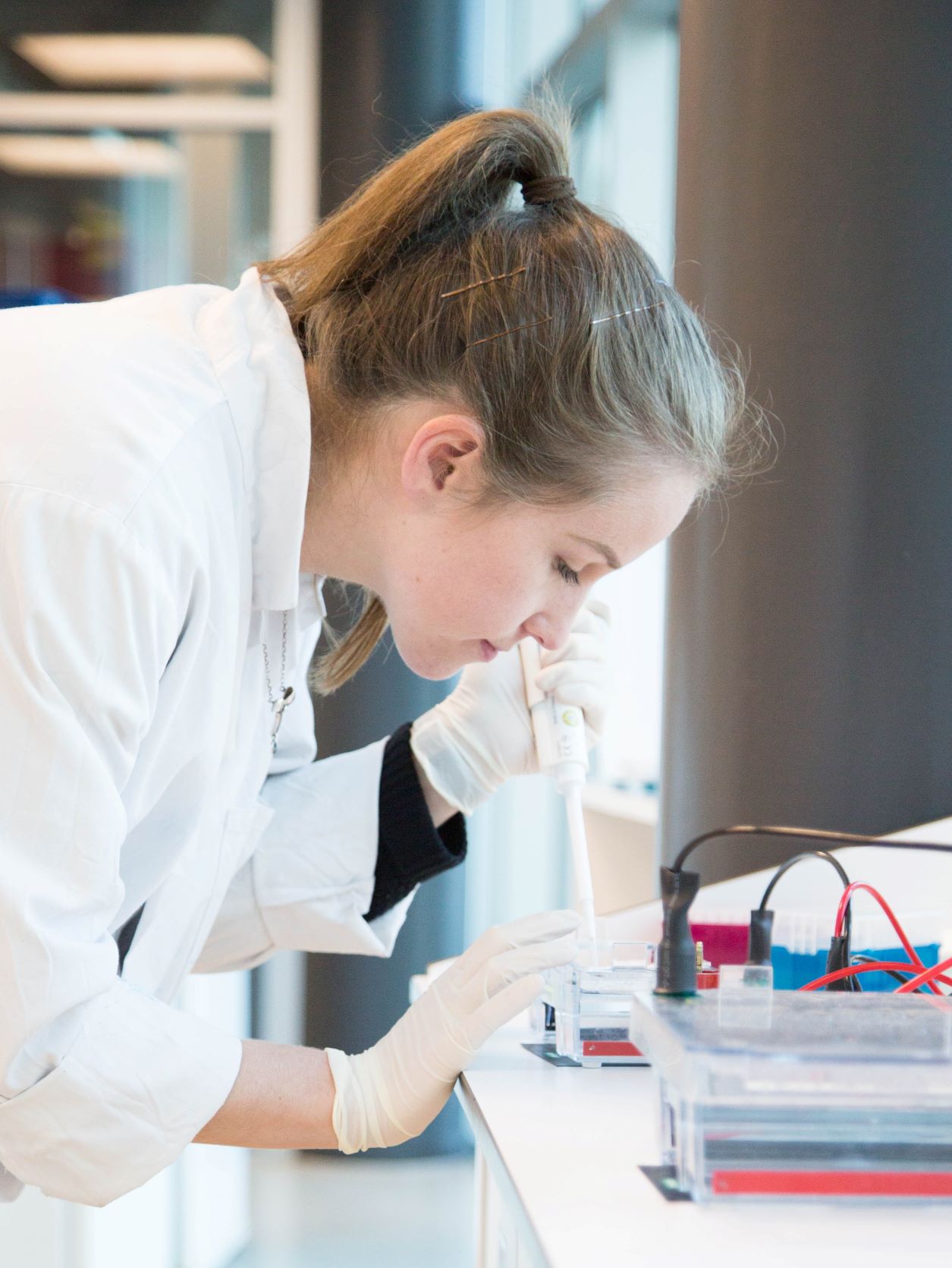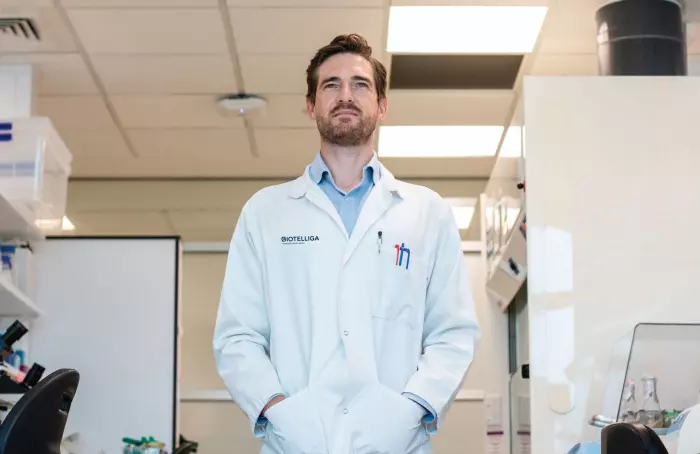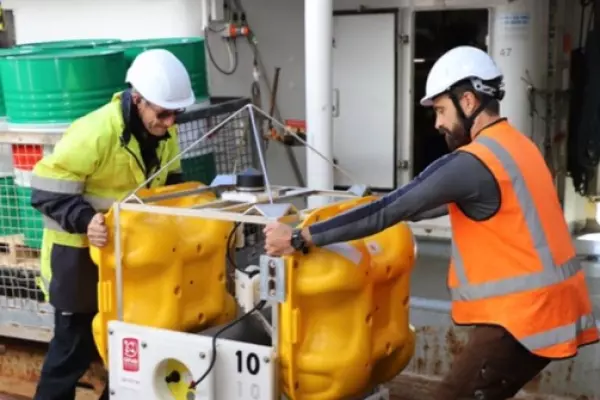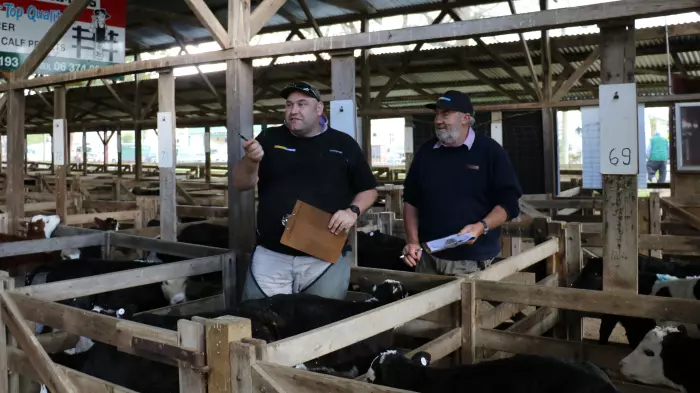Imagine: instead of donning protective suits and heading into their fields with spray canisters full of pesticides, farmers fill their tanks with a fungus slush.
Once sprayed onto the valuable crops, the slush seeps into the plants, where the fungi shield them from stressors like drought or insects.
That’s the future Damien Fleetwood envisions for agriculture - New Zealand’s and the world’s. He’s the chief executive of Biotelliga, a company mining fungi for cleaner ways to protect crops.
Biotelliga focuses on two types of products: pesticides made from active compounds extracted from fungi; and endophytes, fungi that burrow inside plants and give them a benefit such as immunity from pests.
“Like a vaccine for plants,” is how Fleetwood explains it.
It’s not just because Fleetwood is a total fungi nerd (he has a PhD in fungi genetics and started his career as a mycologist, fungi scientist) that the company is going down this route.
The need to feed people will be more pressing as the global population nears 9 billion by 2050. With little land left available to plant new crops, it’s becoming more about increasing yields.
There’s also a growing dislike, among both consumers and growers, of traditional chemical pesticides.
“We’ve had five decades of horrendous excuses for chemistry,” says Fleetwood. “It’s absolutely been required, but it’s not great for the environment.
“Certainly in the last ten years there’s also been a strong demand for natural solutions.”
But how did a research scientist who spent his days in the lab poring over DNA and ergot alkaloids come to lead a company that’s now vying for the chance to be part of a massive US biopesticide trial?
And how does NZ research IP become a product that helps bolster our economy?
“We’re a long way from the company we started out as,” says Fleetwood. Biotelliga began in a garage (of course) in South Auckland. At first, they were developing biological pesticides for the local market.
 In Biotelliga's lab, Libby Mehrtens mines fungi for technology (Image: supplied)
In Biotelliga's lab, Libby Mehrtens mines fungi for technology (Image: supplied)“It started out with what I’d call traditional technology,” explains Fleetwood, who wasn’t part of the initial founding. “It was good, but it wasn’t going to be game-changing for the industry.”
The company slowly transformed from manufacturing products to the cutting edge of development. Part of that growth was through bringing in the “high flying industry guru” Wolfgang Roesch, who previously managed portfolios at the multinational Bayer CropScience.
Roesch’s strategy was to develop technologies that could be used globally and compete with traditional and popular chemical products.
Fleetwood joined in 2014 as chief scientist, and two years later the company had honed its focus to the two key technologies they’re known for today.
Fleetwood had spent the majority of his scientific career at AgResearch, working on the kinds of naturally occurring, fungi-made molecules that Biotelliga was interested in.
For business’s sake
Biotelliga did not work alone. Callaghan Innovation has been closely involved in getting the company off the ground and to where it is today.
Callaghan is a crown entity and New Zealand’s self-proclaimed “innovation agency”. Its core mission, according to Group Manager Market Engagement Florian Spoerl, is “to support R&D performing and innovating companies in New Zealand - to allow them to grow faster and have a deeper impact.”
What that means practically is that Callaghan Innovation provides training, R&D grants and access to scientific and tech expertise. Spoerl makes sure to distinguish it from other research organisations in Aotearoa. Yes, Callaghan has more than 200 of its own scientists and dedicated labs, but it doesn’t “do science for science's sake,” he says. It’s about science for business.
“We can deploy scientists into business. We can allow companies to come in and work on our site or outsource their R&D to us. So it’s quite a different approach compared to other science ecosystem players.”
For Biotelliga, Callaghan provided project-specific grants that allowed them to develop their lead technology as well as student and career grants, which helped hire students for particular Master’s or PhD projects. Some of those students went on to become employees of the company.
Biotelliga also took advantage of the Callaghan Innovation growth grants, which were replaced in 2020 by the government’s R&D tax incentive. The incentive gives eligible companies 15% tax credit on R&D costs.
The move to a tax credit over cash was a shock for Fleetwood and his team, who can't make much use of the scheme because they’re not a profitable company yet. “For a company like us it’s reasonably meaningless because we’re pre-profit. We went from a system where we were getting paid a known amount quarterly in advance to not even getting a tax rebate in arrears,” Fleetwood says.
“Big companies have said they’re trying to find ways to make [the tax credit] more appropriate [for pre-profit companies] but I see no signs that that’s happening.”
Callaghan told BusinessDesk that pre-profit companies could make use of the tax credit scheme, but was unable to explain how.
 Callaghan Innovation's Ashna Khan facilitates a "wraparound service" (Image: supplied)
Callaghan Innovation's Ashna Khan facilitates a "wraparound service" (Image: supplied)As well as funding, Biotelliga harnessed Callaghan Innovation’s scientific expertise. Specifically, the company worked closely with the process engineering team at Callaghan’s Lower Hutt facilities to figure out the best ways to extract their fungi and key ingredients.
Their go-to at Callaghan Innovation is agritech customer manager Ashna Khan. She explains her role as facilitating Callaghan’s “wraparound service” - like taking the Biotelliga team overseas to meet similar companies, connecting them with experts inside and outside Callahan, and looking for future partnerships.
An expensive engagement
“I actively engage with them all the time. It's quite ad hoc,” says Khan. “They can pick up the phone and have a chat with me about anything they want to. And that happens quite a lot.”
Khan describes her relationship with Biotelliga as more hands-on than with some clients, and says her role depends on the needs of a particular company. “Not all of them are deeply engaged. Some like a lighter touch.”
The relationship wasn’t perfect, however. Fleetwood notes that the type of expertise on offer wasn’t always in line with what they needed and that operating with a crown entity is an expensive undertaking. “As a crown entity they have to make a profit, but that makes it expensive to work with them. We had no alternative though,” he says.
Khan, who works with around 40 companies as part of her Callaghan portfolio, says she also had her doubts about the company along the way. She says she often questioned the company’s research-focussed business model and believes it’s why Biotelliga still isn’t making money.
“After ten years if you’re still not profitable, then you have to have a look at the business model,” she says. Khan adds that Biotelliga is the only company in her portfolio with no plans to create a pipeline to commercialise their product here in New Zealand, instead relying on a multinational to sweep them up.
But Biotelliga has held strong on its research focus. “We’re very much a company of scientists, and fungal scientists. We mine fungi for technology,” says Fleetwood. That doesn’t mean they only do experimental work, he adds.
Inconsistent, naturally
A large part of Biotelliga’s business is developing fermentation systems for the fungi, creating product formulations, and registering products in Aotearoa and overseas. “Our programme plans span discovery to product launch,” says Fleetwood.
The other issue Biotelliga and Khan faced is that biologically based pesticides don’t yet stack up to traditional chemical pesticides. The “biologicals” just don’t work as consistently.
“They might work great one day but not the next,” concedes Fleetwood. Khan, who has a PhD in organic chemistry, adds: “Nobody wants to use something where they don’t know what the effect is going to be.”
Part of the reason the tech isn’t consistent is because, for one, it relies on a biological organism that lives in its own specific environmental conditions. Those conditions work best when tightly controlled. Second, the compounds the fungi makes that affect the pest in question haven’t been well defined or quantified up until this point, so it’s unclear which ones, or which combinations, are doing the work.
That makes developing a commercial biological product challenging, says Fleetwood. This is why Biotelliga decided to spend their R&D dollars identifying specific active molecules in the fungi that directly affect the pest, then making sure those compounds are in their product in defined amounts so that it works consistently.
Biotelliga is almost ready to register two products for the NZ market. Khan has also put the products forward for a major US biological pesticide trial with the farming consortium Western Growers.
“If they get on this Western Growers trial and they can prove their product is doing what they are claiming it does, it will open a lot of doors for them,” she says.
It’s unclear, however, what will be Biotelliga’s relationship with Callaghan Innovation going forward. The innovation agency is currently undergoing a significant restructure, according to Khan, and she will be leaving the agency at the end of March.
“We’re not sure what our future engagement plan is going to look like. That’s an uncertainty we still have,” she says.
Khan is hoping to continue supporting Biotelliga where she can, saying her door is always open, although adding “we’ve supported them on the commercial side, now it’s up to the science” – that is, showing that Biotelliga’s biological pesticide is effective and consistent.
Better returns ...
Stefan Korn, Callaghan Innovation’s chief product officer, says Callaghan supports taking a look at the system, but that the green paper doesn’t propose much in terms of commercialisation initiatives. He agrees that more money needs to be spent on the development half of R&D.
“We’re really passionate about getting a better return on our investment in research and science in NZ. For the taxpayer dollars that we spend on research and science, we want more commercial returns, more financial returns,” Korn says.
 Callaghan Innovation's Stefan Korn is looking for "some sort of political process" for research priorities (Image: supplied)
Callaghan Innovation's Stefan Korn is looking for "some sort of political process" for research priorities (Image: supplied)
He also wants a wider mix of people involved in the decision making on what science is done. He believes that, currently, research interests are driven by top-level academics and not those who may eventually benefit from the science.
“It’s often down to the system itself to decide what it wants to do, which we don’t think is a great way of doing it.
... and more politics, please
“There should be others in the mix that decide what those priorities are, like people in industry, communities, NGOs, Māori…”
He believes, too, that science should be aligned with politics more closely, in what he calls a problem-orientated approach.
“We want some sort of political process to decide on research priorities, but also commercialisation and innovation priorities, that are aligned with the problems that we actually have right now, versus some discovery that might be useful at some point.”
Fleetwood, too, would like to see more support for R&D. “Successive governments going a long way back have talked a good talk about wanting to increase [R&D] but haven’t really made meaningful [progress] on the direct government funding side or encouraging industry funding,” he says.
"We are lucky to have a lot of good scientists who do a lot of good work, but we don’t have access to the kind of capital that our peers overseas do. It’s a completely different ballpark.”
Yet Fleetwood remains optimistic both about his own company, saying it’s super exciting times for them, and the innovation space in general.
“I think we have a good history of R&D in New Zealand, so we have a strong history to build off.”
This story was amended on March 25 2023 to reflect Callaghan's assertion that pre-profit companies can make use of the r&d tax credit scheme and, at Callaghan Innovation's request, removed a reference linking restructuring at Callaghan and wider science system reforms.













